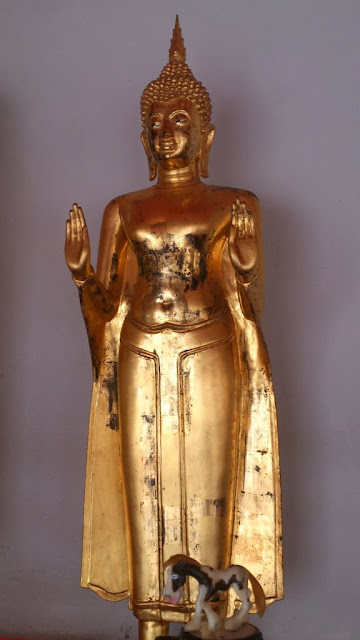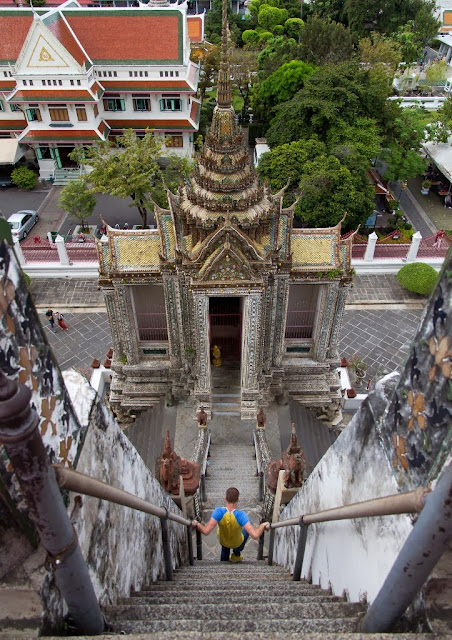***
Jim Thomson was an American who helped the Thai silk industry revive. His house, built in a traditional Thai style, is today a museum. It is located just next to a pedestrian walk.
Next to the main entry, you can admire some beautiful Thai ladies making silk threads. The device is turning so fast that the camera does not manage to catch it.
The house is spacious. Big blinds can be folded, making it look as if the house did not have walls at all.
As a result, inside you can see the breeze. And feel at ease.
Actually, from the side of the garden there are no walls at all. So let's take a look at what e can find there. Here comes something that looks like a little chapel. I really liked these huge yellow flowers.
And there comes a little fish. Maybe not that little after all.
Let's sneak through the open window again.
I must tell you that I really liked the style and the architecture. I would probably have difficulties to get used to all this openness. But I have noticed that on the upper floor the walls are more solid. Which means more privacy in the end.
* * *
To keep this nice and relaxing mood, our last stop in Bangkok will be the Lumpini Park.
Lumpini Park has been created in 1925 by the king Rama VI. His statue can be found near the southwestern entrance to the park.
Obviously, the current royal couple is also present.
The main element of the park is the artificial lake, bringing calm and serenity to the world running faster and faster.
You can meet there people practicing tai-chi ...
... and animals just enjoying the sunlight.
You can meditate a bit next to one of the small chapels ...
... or just sit inside one of those pavilions and think how to make the world a better place.
My plan is to sit for a while on one of these benches.
We have bought with Ata_ lots of postcards for our friends Postcrossers so now time to write all of them with nice greetings.
So our last stop for today will be this nice post office. Watch out for the postcards now!


















































